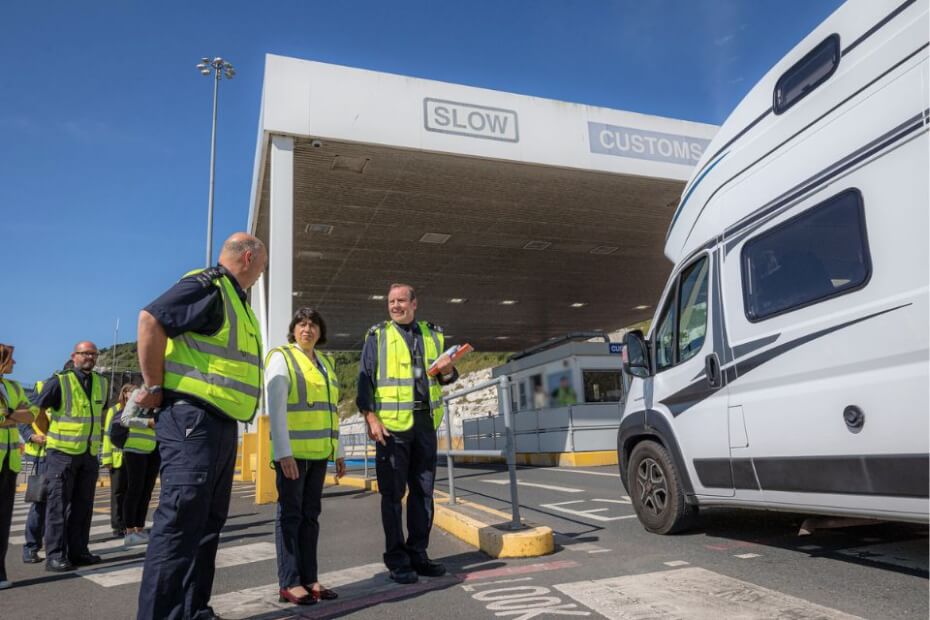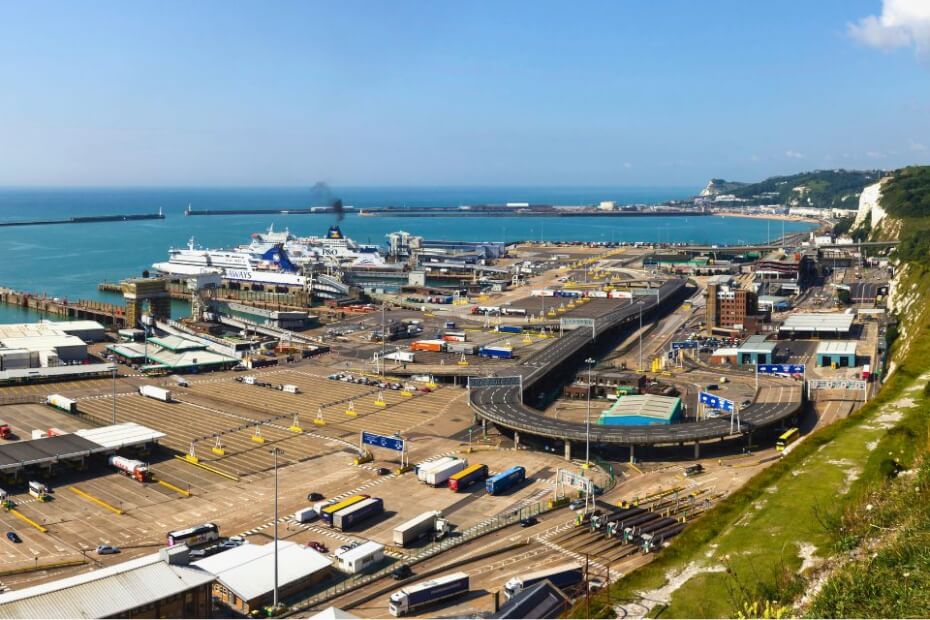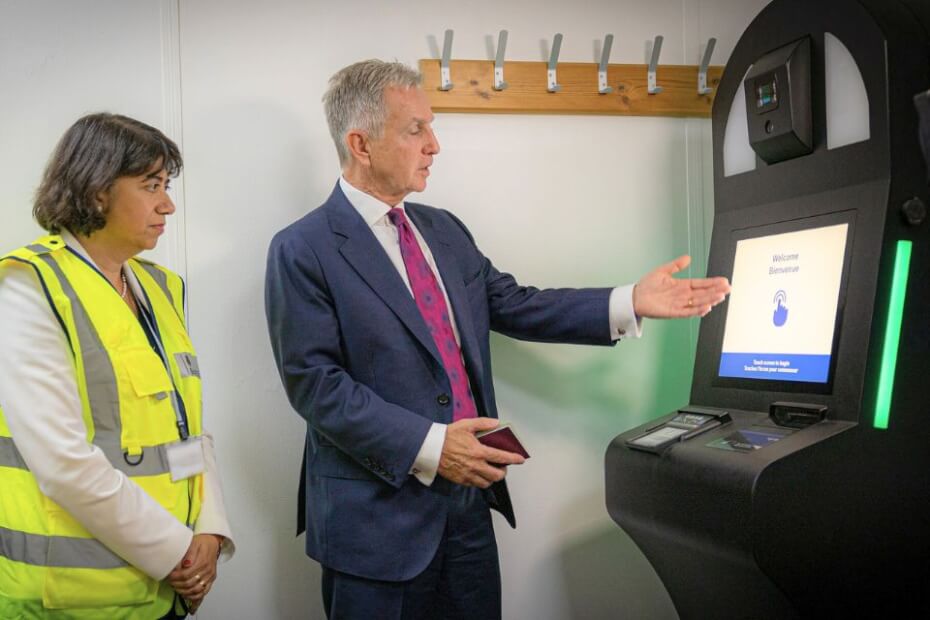
The United Kingdom (UK) has developed a contingency plan for the Port of Dover to ease traffic woes in Kent.
This is part of the government’s preparations for the European Union’s (EU’s) new Entry/Exit System (EES) launch in November 2024.
The Port of Dover in Kent is one of Europe’s busiest passenger ports. Many anticipate that the port would experience the worst delays when the EES rolls out.
Kent officials have repeatedly raised concerns about the worst-case scenario of 14-hour delays and traffic gridlock due to EES delays.
The contingency plan involves “stacking” cars at designated sites to manage the flow of vehicles bound for the EU.
The EES will bring stricter border checks for non-EU citizens entering and leaving the EU’s Schengen Zone.
On the first entry after the EES goes live, non-EU nationals must register biometric data such as fingerprints and facial scans at the border.
The EES will log travelers’ entry and exit using biometric data instead of manually stamping passports at the border.
How quickly the new border checks can be completed is a concern for all border crossings, especially during peak travel times.
The government hopes the contingency plans will prevent a repeat of past traffic bottlenecks on Kent’s roadways.
Stacking cars to avoid traffic chaos in Kent
The UK Government is finalizing plans to use off-road sites to stack cars in Dover if gridlock, caused by EES delays, becomes a real threat.
This approach, initially part of the UK’s “no-deal Brexit” contingency plans, could help ensure that roads remain open.
It was one of the solutions to prevent chaos at the Short Straits, the shortest way between the UK and mainland Europe.
Stacking cars will help prevent long delays, impacting tourists, vital services, and trade routes in Kent.
The plan involves queueing motorists arriving at the port in lanes while waiting to clear EES border checks.
An official will use a table to help pre-register passengers in each car at the front of the queue.
With the EES, border checks for each person will take about two minutes. This means a family of four will take at least eight to ten minutes.
According to The Times, the sites where the cars would queue can be activated quickly in case traffic becomes unmanageable.
A source familiar with the plan explained: “These are sites that can ‘stand up, stand down’ at speed.”
“They’ll be near major roads and designed to hold back traffic so key arteries in Kent don’t become totally gridlocked,” the source added.
Why the Port of Dover is a concern when the EES rolls out

The contingency plan comes after officials expressed growing concerns over the potential impact of the EES on traffic in the region.
Officials are particularly concerned about the EES’s impact on the Port of Dover, where space for waiting vehicles is limited.
More than 1.3 million cars pass through Dover annually. Even a slight delay in border processes could quickly escalate into hours-long waits.
Kent County Council leader Roger Gough said the EES checks could lead to “extremely serious delays” for international trade and travel in Kent.
He added that it would also hamper “the delivery of vital public sector services along the route to Dover.”
Gough also stressed the need for swift action, pressing the government to do everything possible to prevent disruptions at the UK-France border.
Seema Malhotra, UK’s Minister for Migration and Citizenship, stated that preparations are well underway for a smooth system.
“We are keeping off-road sites under review [so] that, should they need to be used, we have a contingency plan for that,” she said.
Malhotra added that they are continuing to work with the local councils, the EU, and French counterparts to ensure EES readiness.
She explained that their goal is to “minimize the risk of long queues, particularly at peak travel times.”
Despite these assurances, some remain skeptical about the readiness of border staff and the technology they will use.
This and the lack of live testing leave many unknowns about how the EES border checks would play out.
New funding to improve border operations

The UK Government has allocated an additional £10.5 million for EES preparations to address potential travel delays.
This funding will be split between the Port of Dover, the Channel Tunnel at Folkestone, and Eurostar at St. Pancras. Each border crossing will receive £3.5 million.
The Port of Dover will use the money to help create a new passenger processing area as part of the ongoing Granville Dock project.
The project involves filling in an old cargo dock to make room for more border control kiosks.
The new area, approximately the size of five football fields, is expected to be ready by Easter 2025.
This will be when officials anticipate the first real test of the EES system as holiday traffic picks up.
The Channel Tunnel in Folkestone has more available space to accommodate vehicles.
Officials are using the money to devise a plan allowing passengers to register their biometrics inside a new terminal.
The goal is to speed up the registration process, minimizing vehicle queues before boarding the Channel Tunnel.
These improvements raise hopes to prevent a repeat of the severe traffic problems that have plagued Kent in the past.
While promising, the stacking cars plan was never implemented at the end of the Brexit transition period.
Traffic gridlock was avoided, mainly because the Brexit date coincided with lockdowns and travel bans in the UK.
The first real stress test for the EES is expected at the initial rollout and during the holiday season.
All eyes are on the Port of Dover to see how well the port’s system holds up when the EES border checks roll out.
All eyes are on the Port of Dover to see how well the port’s system holds up when the EES border checks roll out.

